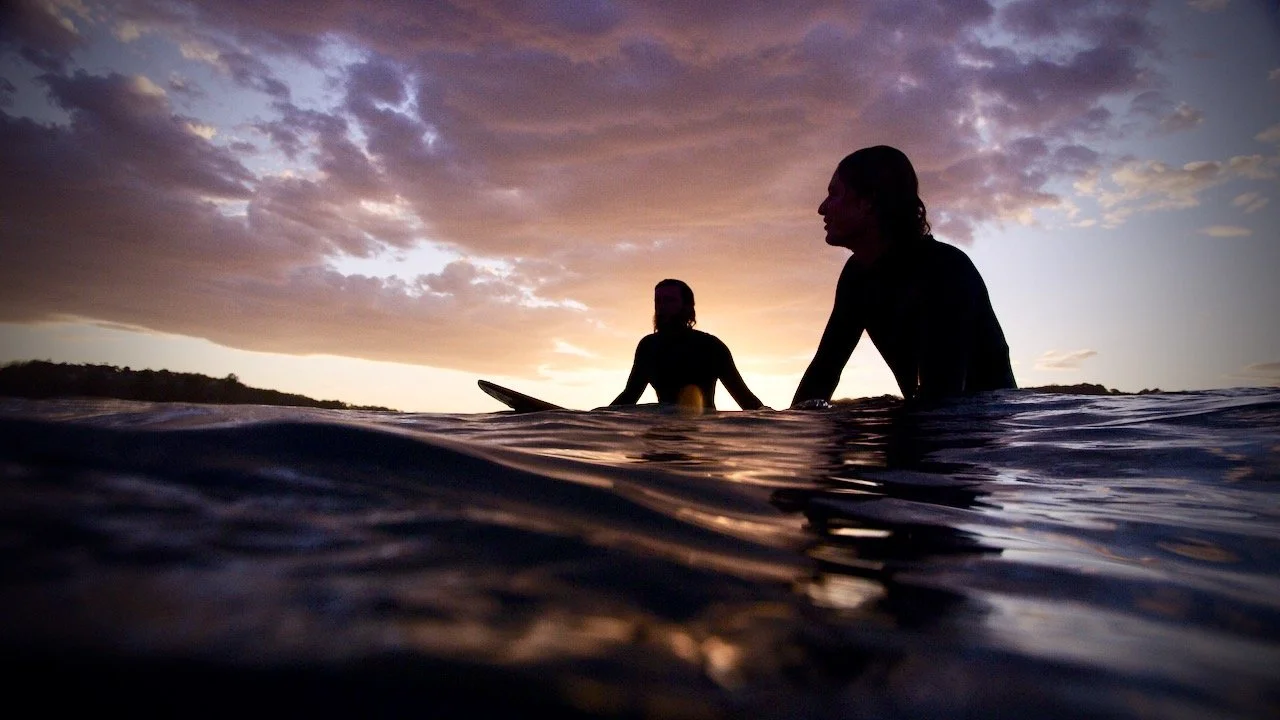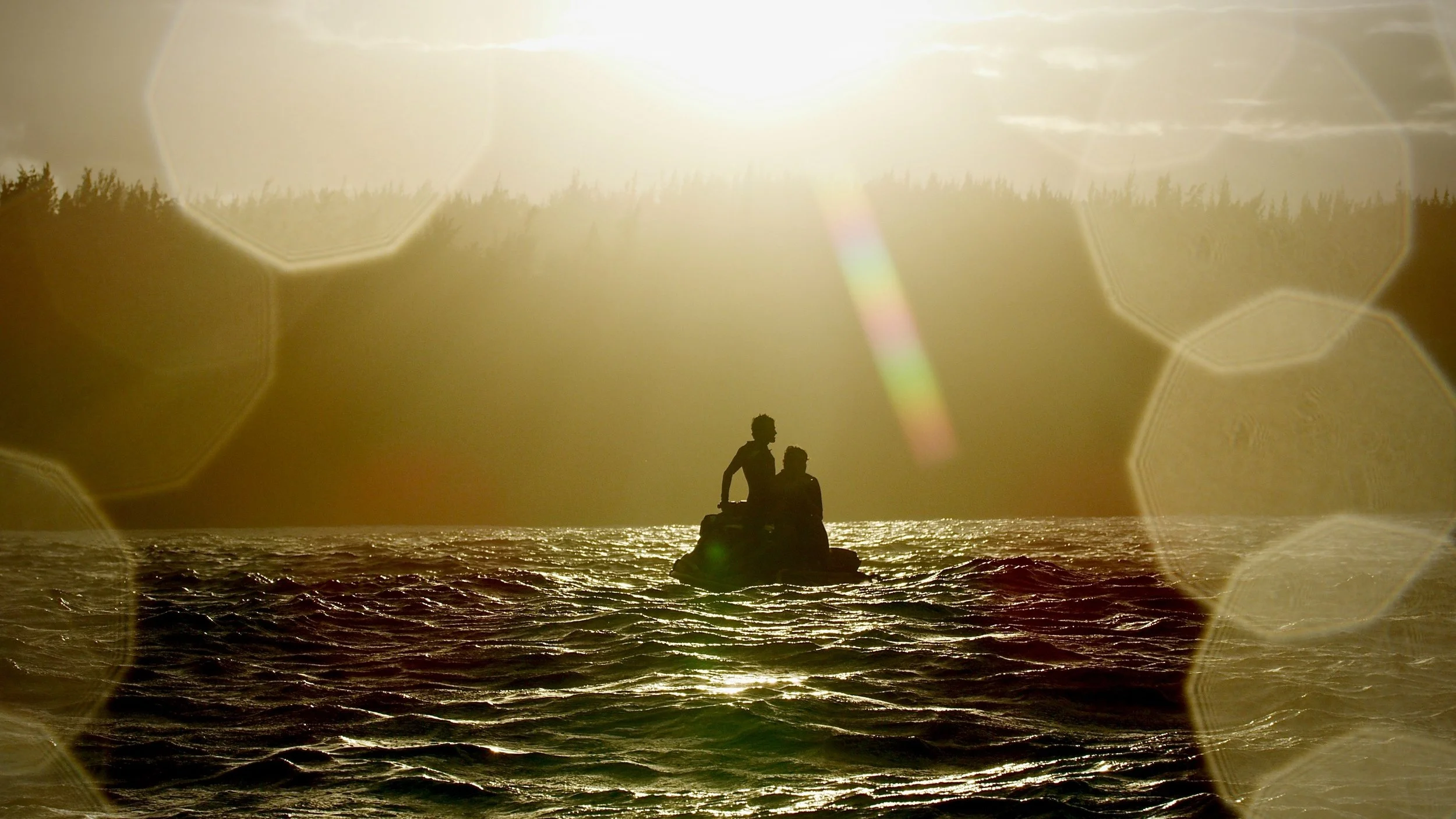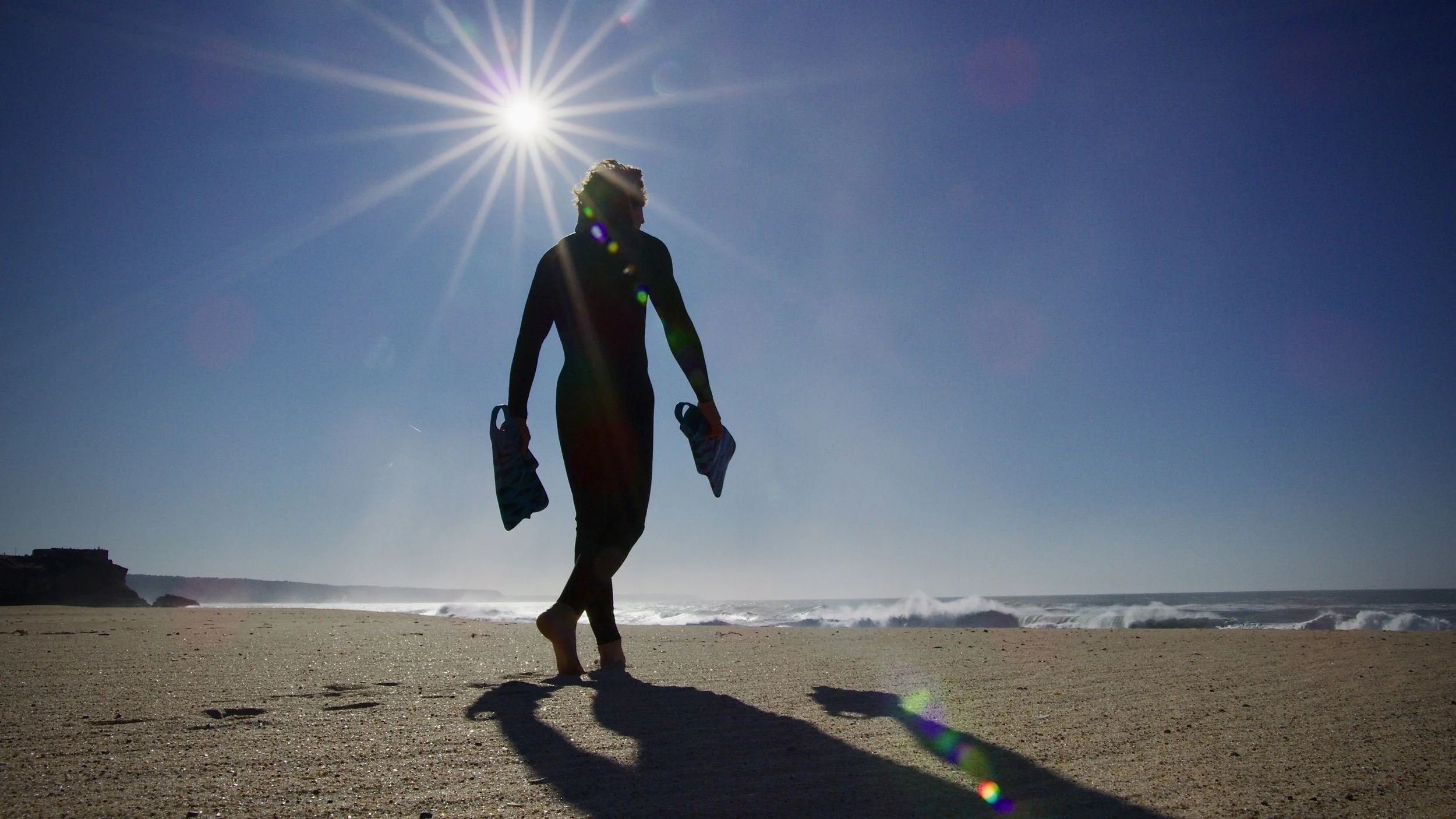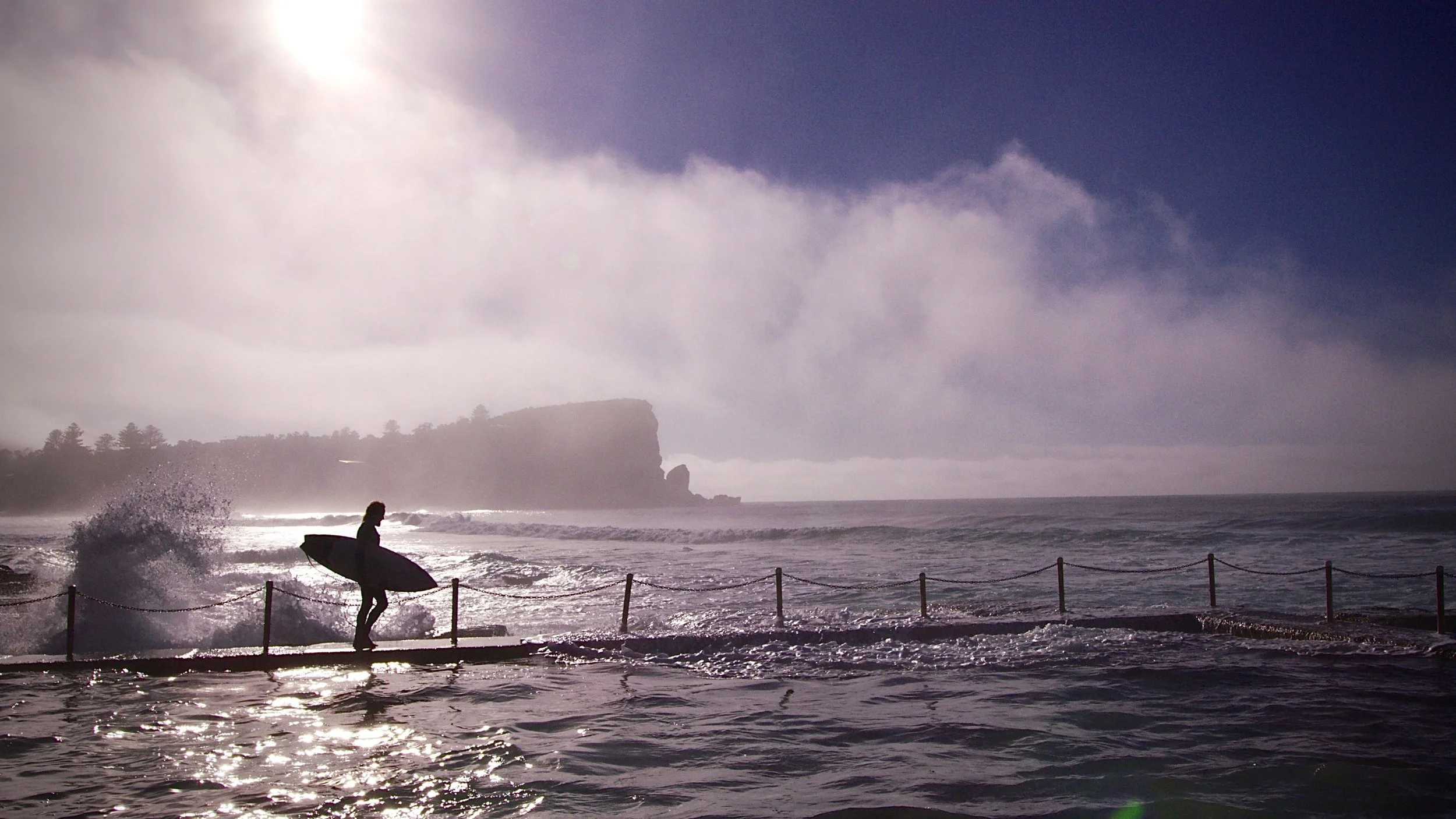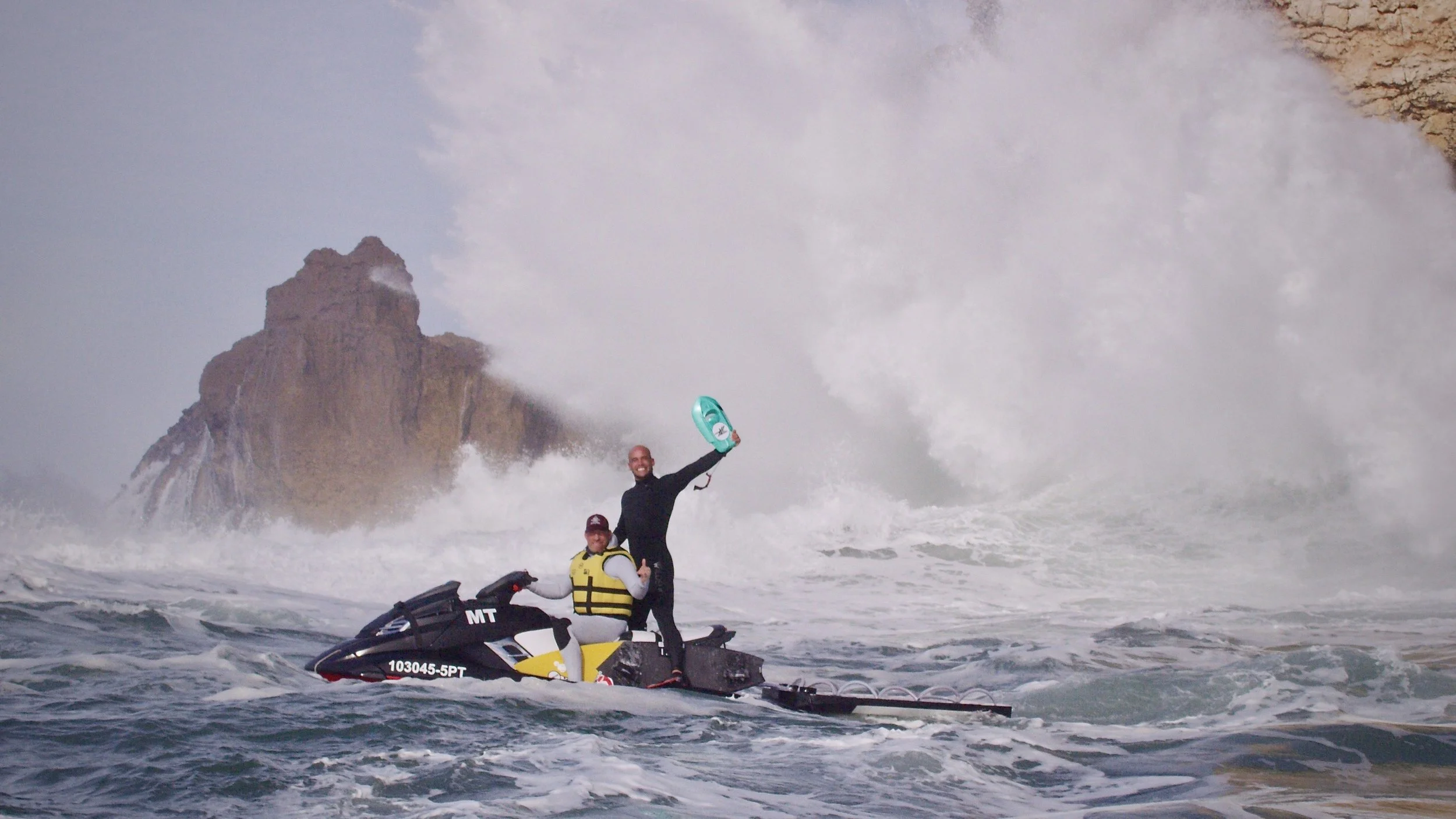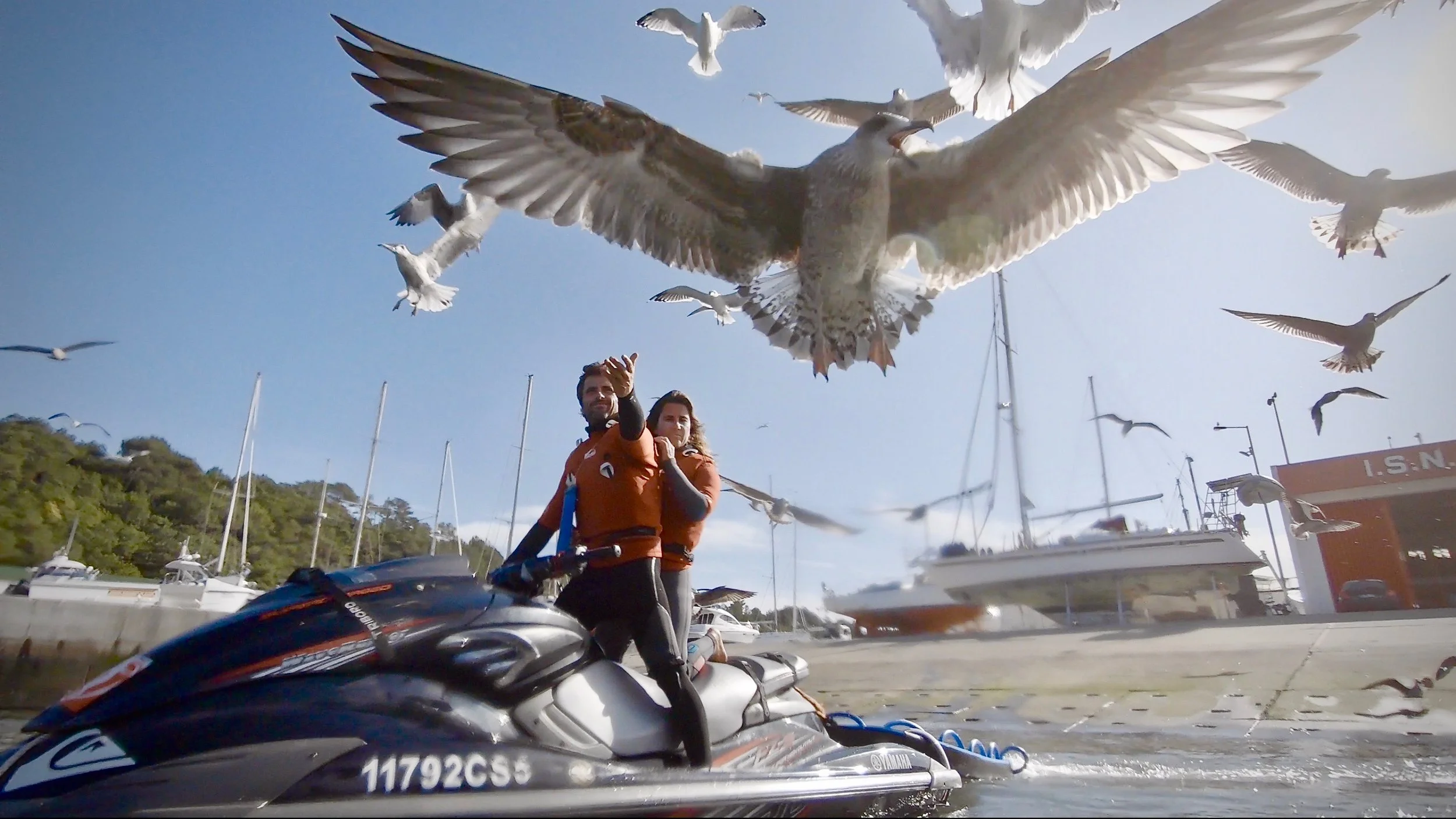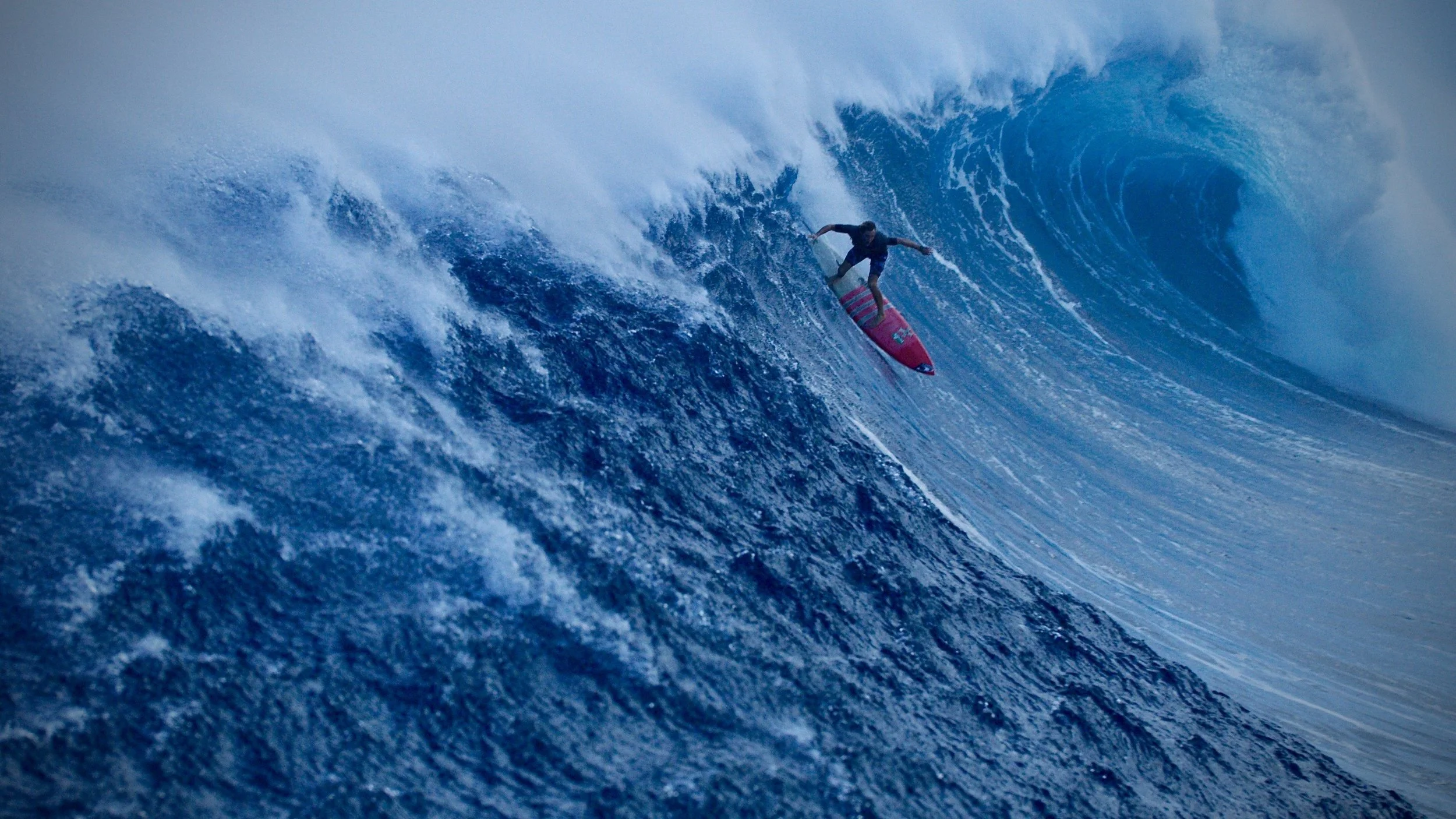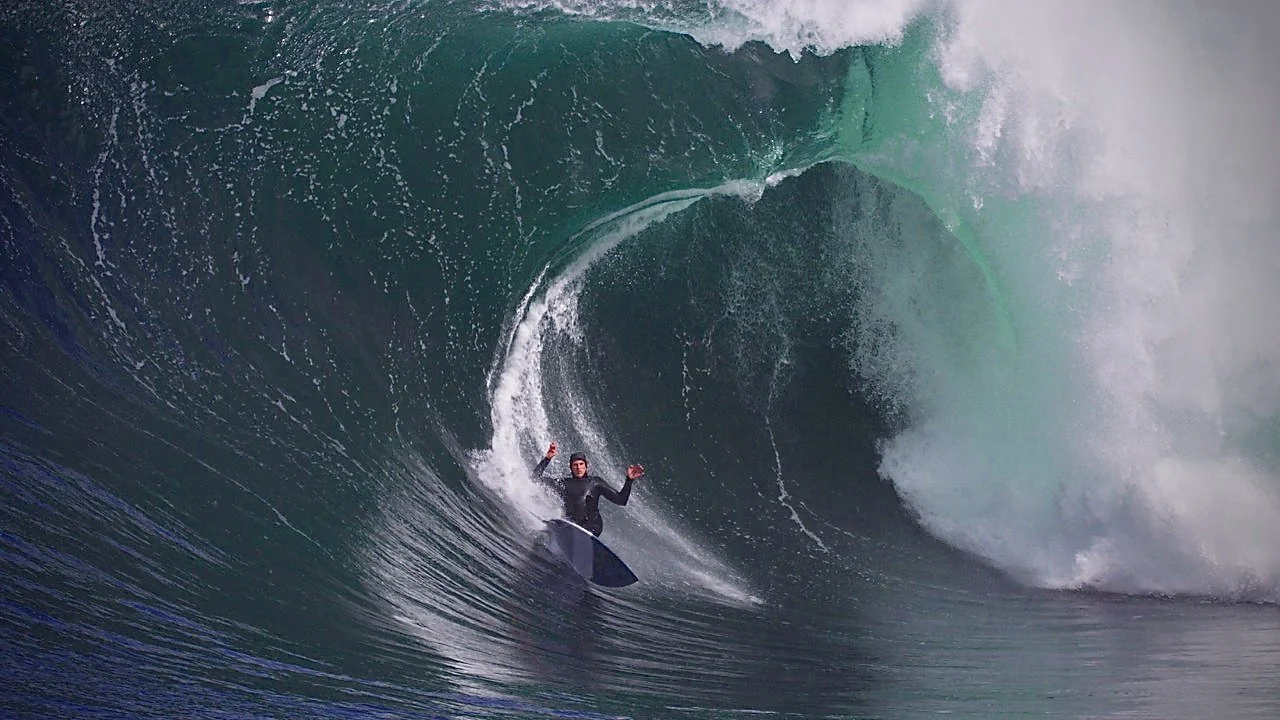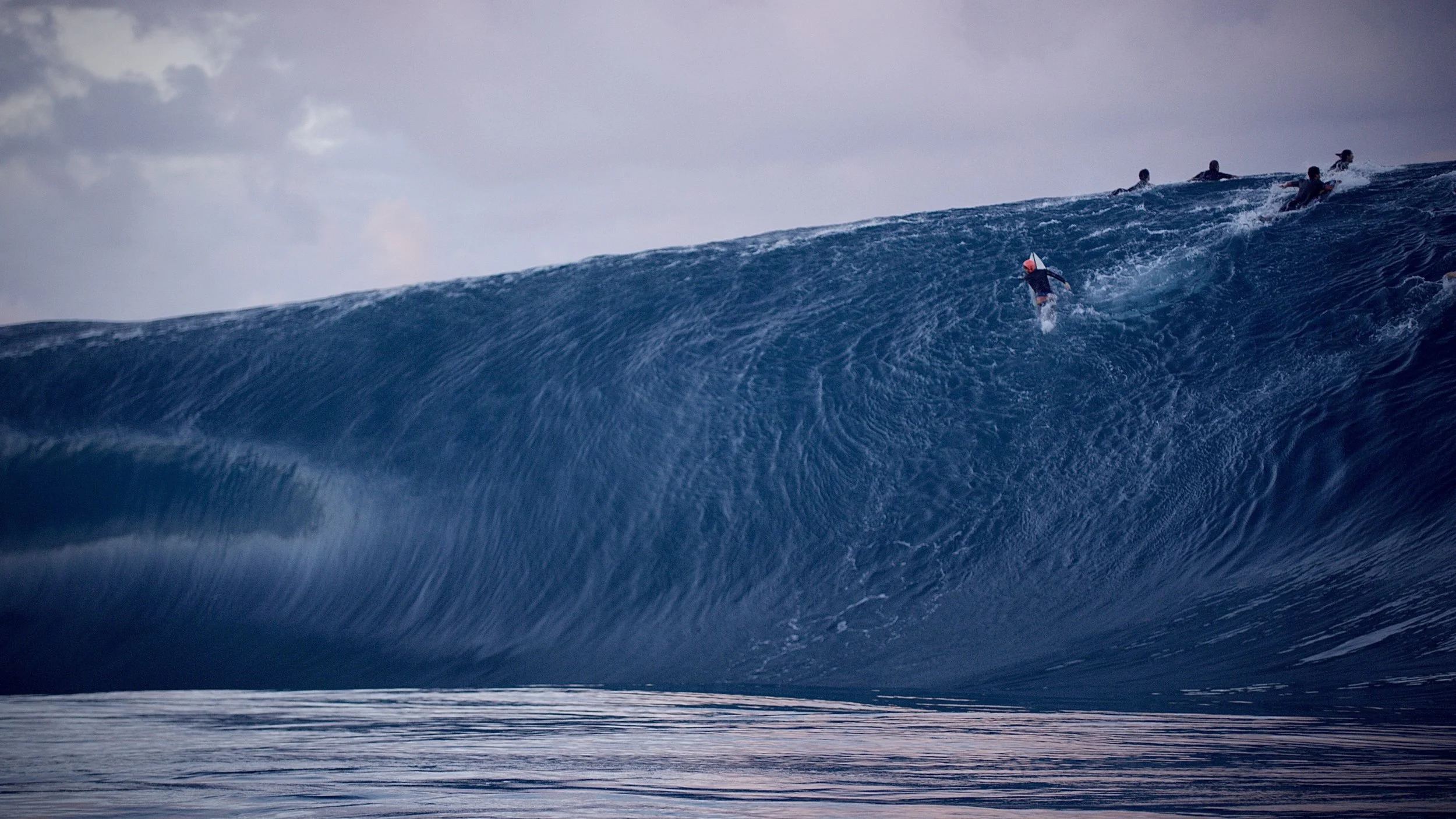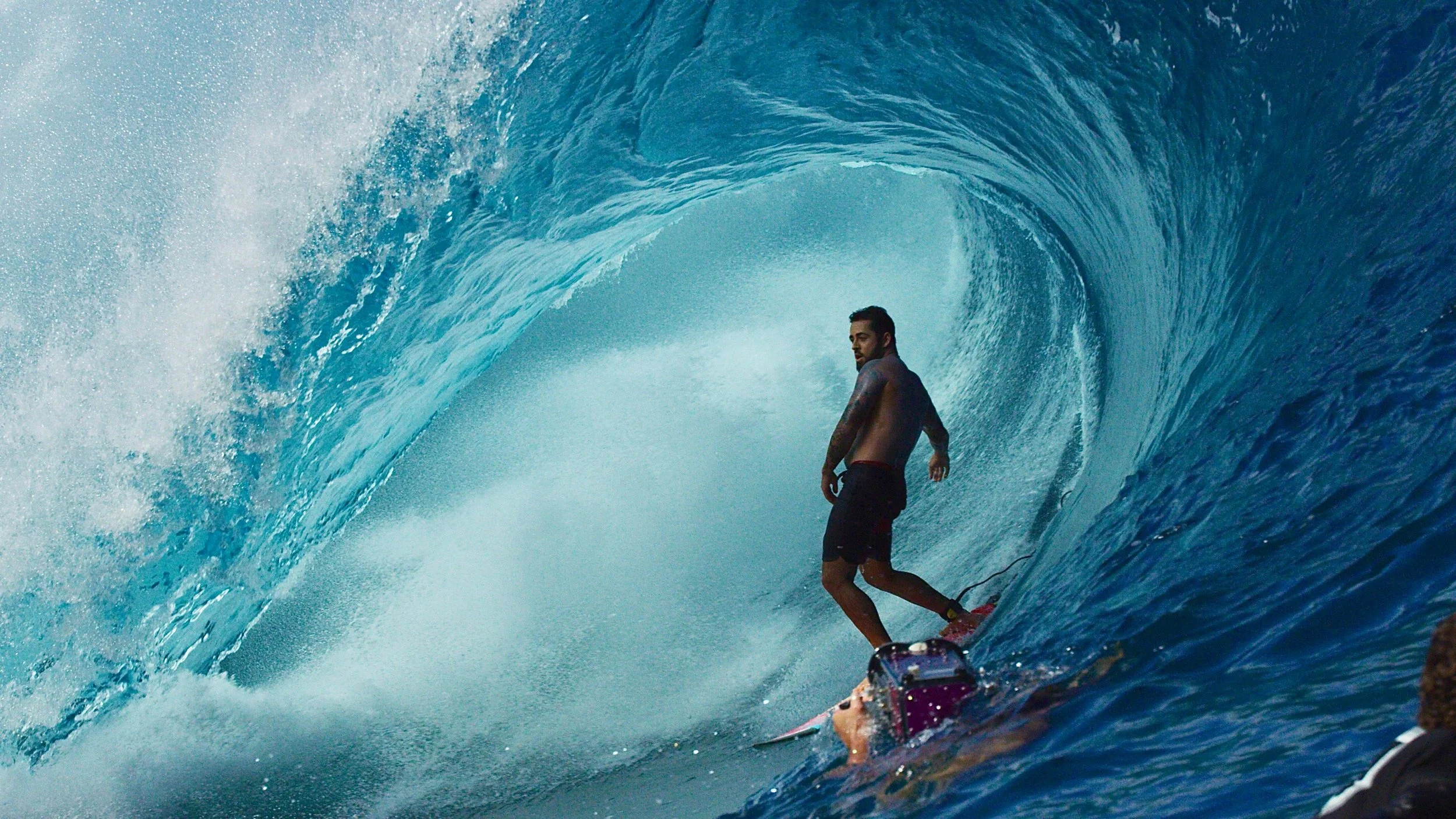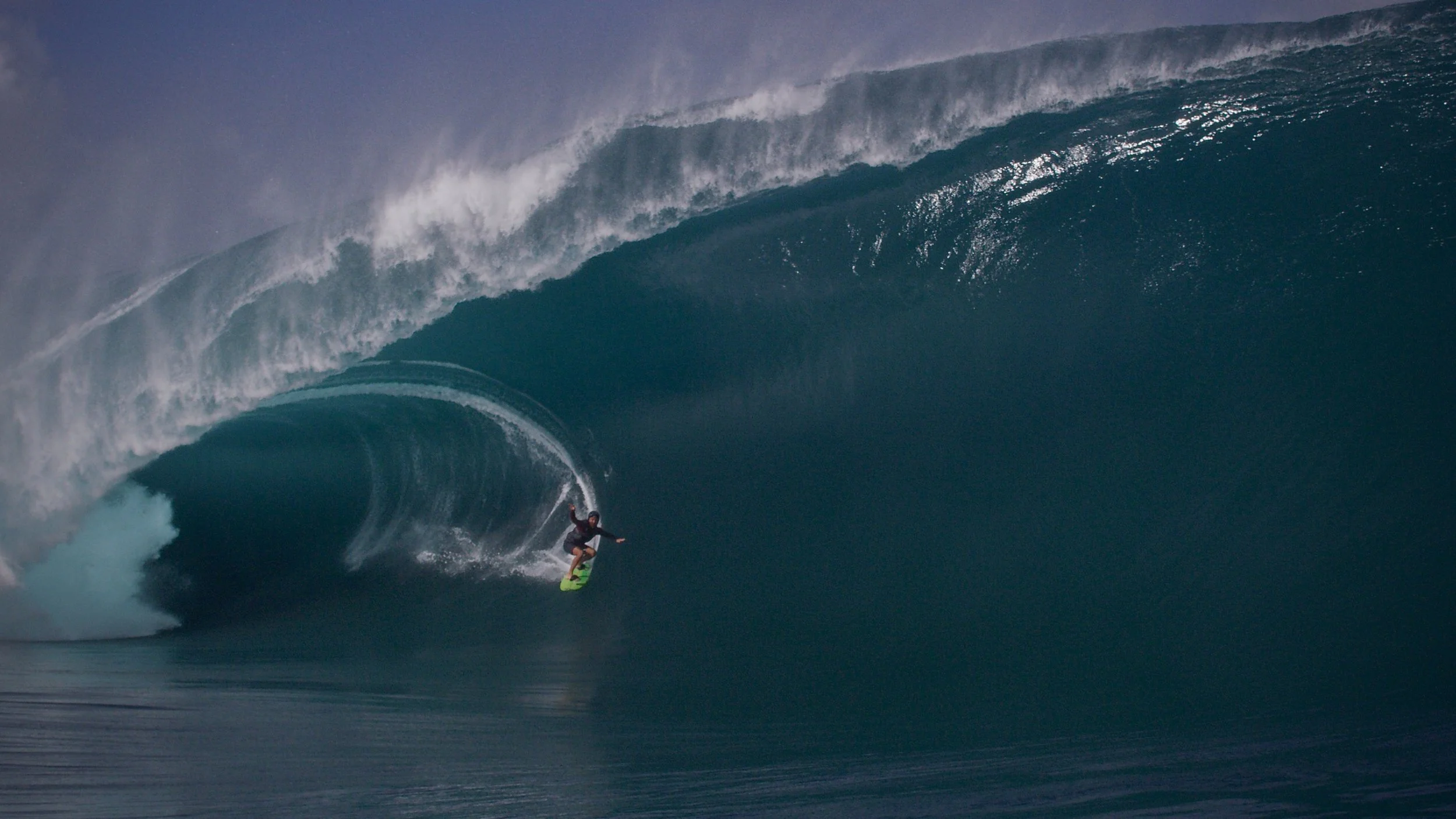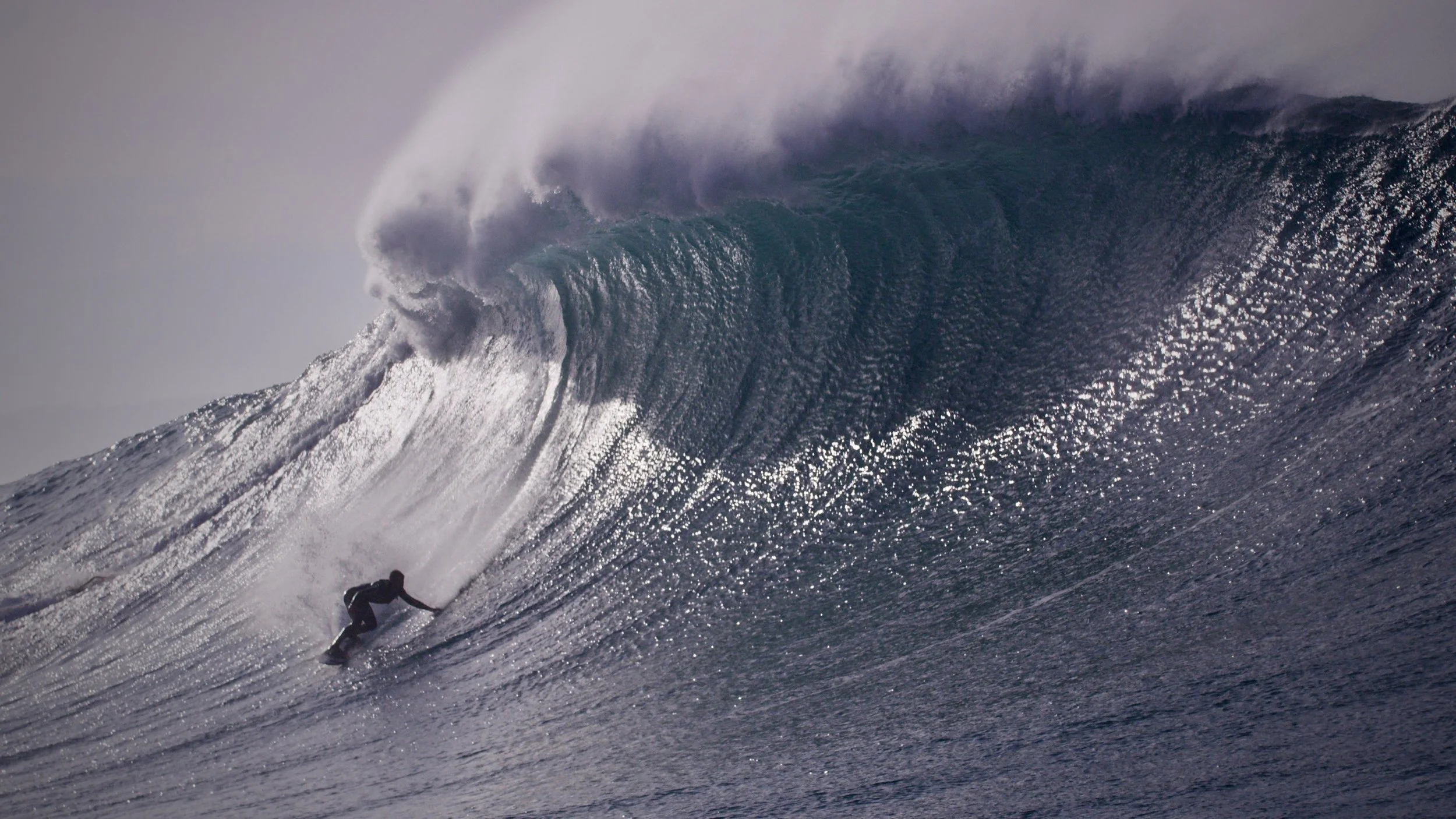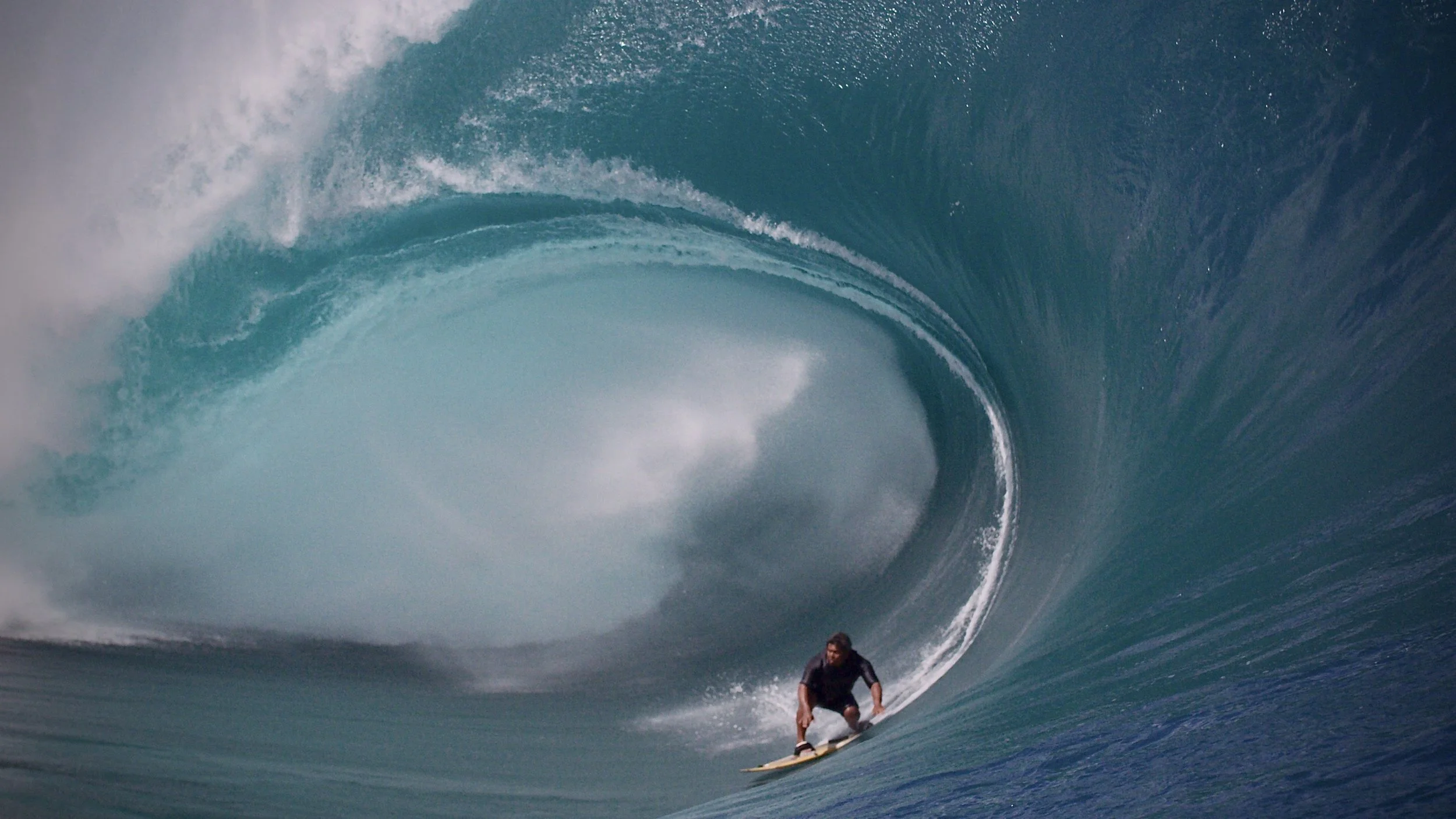Surfing Cinematographer Tim Bonython
by Dan Wagner
Photos © Tim Bonython 2020
Since the early 1980’s, legendary cinematographer and director Tim Bonython has thrilled a global audience with beautiful footage of surfers performing daring feats on some of the most incredible waves imaginable. Ever humble, Tim describes what he does as simply “putting bums on seats!” While this may be true, like a wave there’s much more below the surface. Are surf cinematographers born, are they made, or is there some magical mixture of the two that results in a person dedicating their life to watching water?
Let’s find out from the man himself.
DW: Tim, when and where did your love for the ocean begin?
TB: I suppose I was born into a sport that was so good, that I really never wanted to give it up. And so I’ve had this underlying passion from day one. It began when I was living on the coast in Adelaide, South Australia—the fifth largest city in Australia. From infancy to eight or ten we lived in a house next to Tennyson Beach—a beach that doesn’t have any surf.
Growing up in the sixties without the distractions of video games and the Internet, life was about making the most of what the ocean had to offer. Whether swimming, fishing, or playing with my mates, it wasn’t long before the ocean became part of my DNA. Leaving the beach, we moved to the nearby hills to be closer to my dad’s mom. Luckily, the short move didn’t interfere with my ocean activities.
DW: Being that Tennyson Beach didn’t have any surf, how did you discover surfing?
TB: Well, fortunately we moved to Sydney when I was twelve. I became infatuated with surfing. Before that I never knew that there was a whole new sport beside fishing, skin diving, snorkeling, and that kind of stuff. Surfing was a sport that let you become part of the ocean.
DW: That’s sounds like the perfect boyhood. When did photography enter the picture?
TB: It was a great place and time to grow up. And it wasn’t long before my love of surfing combined with a new love of photography. Around this time a family friend game me a Super 8 camera, which I used to begin documenting surfers.
You see, back in the seventies there wasn’t much media on surfing. Sure there was the odd surf movie that would tour in Australia, but by the time we saw it, it was maybe two-years-old. It was nothing like it is now, where you’ll see things within a day, or even live. It’s a whole different world now. Shooting Super 8, and showing the films to my friends evolved into chasing events. I went to Victoria in South Australia and got my first professional job in 1981 at Bells Beach. It’s one of the oldest professional surfing events called the Rip Curl Pro.
And the very first time I went there, it was the biggest Bells Beach ever—the waves were 20 feet high. Also on that day, there was a surfer named Simon Anderson. He brought out a three-fin surfboard called a Thruster that changed the future of professional surfing. Before that, surfers used a single fin. Mark Richards, a three-time world champion, was surfing on a twin fin that day, but it was Simon Anderson’s three-fin that changed the surfing world as we knew it. Today, we even have quad fins—two fins on each side. But the most popular board is still the three-fin Thruster.
DW: Huge Bells Beach and a revolutionary board design. How did people respond to your footage?
TB: So, I was there documenting this incredible day, and when I got back to Adelaide I showed the films at a local pub to a very captive audience. People lined up for miles down the road to pay their five bucks entry fee—and a business was born!
DW: What did you think of your newfound success?
TB: I thought I could chase these events and go to Hawaii every season. My plan was to shoot everything in Super 8, and come back and show the punters—slang for someone who goes to pubs—because people would buy a ticket, watch the show, and keep up to date on what surfing was doing both in Hawaii and Australia.
DW: Sounds like a great plan. Did it play out as you expected?
TB: Yes! Every year I traveled the world shooting all sorts of surfing—and what you have is forty years of my logging every bit of it. Here I am in my early sixties and still loving what I do. And what’s important is that the love affair with surfing photography has been continuous. I’m still just as passionate now as I was in the early eighties and seventies. I’m still doing what I’ve always done, and that’s basically selling tickets—putting bums on seats has been paying my wage.
DW: How do you capture the action? And have you had any close calls?
TB: I tend to shoot mostly from land. But now a lot of these places that break big, like in Tahiti where the surf breaks off a reef, you have to shoot from a boat. When I want to get the ultimate angle, I shoot looking into the wave from the back of a jet ski. I’ve had a few dangerous moments—especially at Nazaré, which is the world’s biggest wave. You don’t want to ever get hit by it.
Waves at Nazaré are so big. And I’m not the kind of person who spends a lot of time dealing with big crazy waves. Surviving big waves requires intense conditioning and training. I’ve fallen off the jet ski a couple of times, but luckily I didn’t drown in the process.
TB: Over the last eight years I’ve been a RED cameraman. I’m kind of an ambassador for RED. I shoot everything now on the Epic Weapon—mostly 6 and 8K for the high-speed frame rate. Due to the Epic Weapon having a cropped sensor, I prefer using the good part of the glass on the lenses. I’m a Sigma Cine ambassador, and shoot with three Sigma Cine lenses—the 18-35mm, 40mm, and a 50-100mm. I also have a 150-600mm Sigma Sports Lens.
On shore I use a Miller tripod because it’s important to have a good fluid head tripod—especially when you’ve got a heavy telephoto lens with a 1.4x teleconverter. This setup gives me up to 840 mm with the Sigma 150-600mm lens.
Giant waves at Nazaré, Portugal
One time I was shooting a YouTube video for a unique action surfer who often wears winged jet suits. His plan was to put on a parachute, jump out of a helicopter, release the parachute, and ride a wave. We were shooting from a boat, and a big set came through and flipped our boat. I got trapped under the boat—that was a moment of terror. It happened one beach up from Bells Beach in Victoria.
DW: Yikes! Let’s talk about something safer. What are your thoughts on gear?
TB: I’ve always wanted the best equipment. Back in the day, if you had the budget, 35mm film would have been the ultimate. The downside is that you would have needed assistants to carry around the tripods and luggage. I’ve always tried to maximize what I could do within my budgets. I shot Super 8 for fifteen years. Then a bit of 16mm—in the water I’d shoot 16mm because you wanted that quality. I’ve seen pretty much every format under the sun. I shot standard Betacam, DVCPRO, 16:9 widescreen, P2 Mini DV, Hi8, and more.
DW: You’ve really seen it all! What are you shooting with now?
DW: You mentioned shooting from a jet ski and while in the water. How do you approach this type of cinematography?
TB: I have custom water housings for shooting from a jet ski, and a custom housing for shooting in the water. While in the water, I need to use the viewfinder from the back of the housings. But when I’m on a jet ski, where the housing and camera weigh over 12-kilos (26.5 lb.), I need to put the rig on my shoulder because it’s too heavy to hold ahead of me like I would in the water. The RED’s been fantastic. To new users, the RED can be a kind of awkward camera to use because of the technical side of it—but that’s only because you need to get your head around it. Once you get your head around it, you can create incredible images. I use the RED to shoot 6K at 80 frames per second, and 8K at 60 frames per second.
I shoot Nazaré from land at 8K because the future is definitely 8K. I’d rather have everything shown at 8K from that land perspective. But in the water, when you need that really important slow-motion moment—then I’ll shoot at 6 or 5K. But I prefer not using the 5K cropped-sensor setup because you’re not using as much glass. I want the best clarity. Obviously you can crop in, but I’m not a fan of cropping in too much in that space.
DW: What other cameras do you like to shoot with?
TB: I have a Sony A7s for run-and-gun documentary stuff. For this type of work I simply grab my ready-to-go camera straight out of my backpack, and snap on a microphone. I use a 24-70mm lens shot at a large lens opening to get a shallow depth-of-field that helps separate subjects from busy backgrounds. Right now I’m considering shooting with a third camera—the Panasonic Lumix S1H. The reason for this is that I need a back-up camera in case my RED camera goes down. And the S1H can do 60fps at 4K—cause you really don’t want to go any lower than 4K if you can help it.
DW: What dream piece of gear do you covet?
TB: Ideally I’d love to have a RED camera with higher 8K frame rate shooting. In terms of a dream camera—it would be a RED camera with 200-300fps at 8K. Obviously, the bigger the file the better—not so much for the hard drives, but for the higher quality it could produce. I’m surprised that in this technically sophisticated digital world, that there are so few high fps cameras. One ultimate camera for high-speed shooting is the 1000fps Phantom Flex4K. Phantom and Vision Research have this space locked in. No one else is really competing in this area.
DW: What advice would you give to budding surf cinematographers?
TB: It’s like any profession—the bottom line is that you have to be very passionate about what you do. You have to love it and be smart. You’re not always making money doing what you love to do. Take me for example. Luckily I’ve had that niche of selling tickets that’s kept me going. Having other things going, like stock footage can help. And I have movies such as The Big Wave Project. Having movies available on demand is a good area to cultivate. YouTube videos, such as my Wipeout videos have been another income source. My video, The Right shot in Western Australia has had a half-million views in only four or five weeks, which is really good. We’re going to do more of that. A silver lining in this Covid-19 cloud is that it’s given me the opportunity to focus on finding time and new ways to share my work—I’ve even managed to catch up on footage shot over the last 3 to 4 years.
DW: What type of shooting is the most challenging and scary?
TB: Shooting in the water, because if you have a problem—fixing it while in the water is much harder. The housing has buttons and knobs that can help, but at the end of the day, you don’t want any problems while you’re in the lineup.
I suppose shooting at Nazaré is super-scary because you don’t want to have the worse case scenario happen there. It’s pretty much death, and that’s the last thing I need in my life. I really love the challenge. It all depends on keeping myself healthy.
DW: What are your thoughts and plans for the future?
TB: I feel fortunate to still love what I do and to be doing exactly what I did 30 years ago. My plan is to keep that ball rolling in the right direction. I have a cable show called, Swell Chasers coming up on Australia’s biggest cable network, Foxtel. We’ve done three shows so far—one in Nazaré, Shipstern Bluff in Tasmania, and another one in Mullaghmore Head, Ireland. We have one more left to complete the current season. Hopefully there will be more to follow. And amidst all this we’re also creating a surf movie festival, and a sequel film titled Big Wave Project 2—which will hopefully be released in 2021. Deep down, I’m still the same boy who grew up loving the ocean in Tennyson Beach.
DW: Tim, this has been a very informative and fun interview. Thank you so much for sharing your thoughts. We wish you continued success, and look forward to seeing more of your work.
TB: Thank you!
I hope this interview has inspired you. Thanks for visiting The Cranky Camera!


